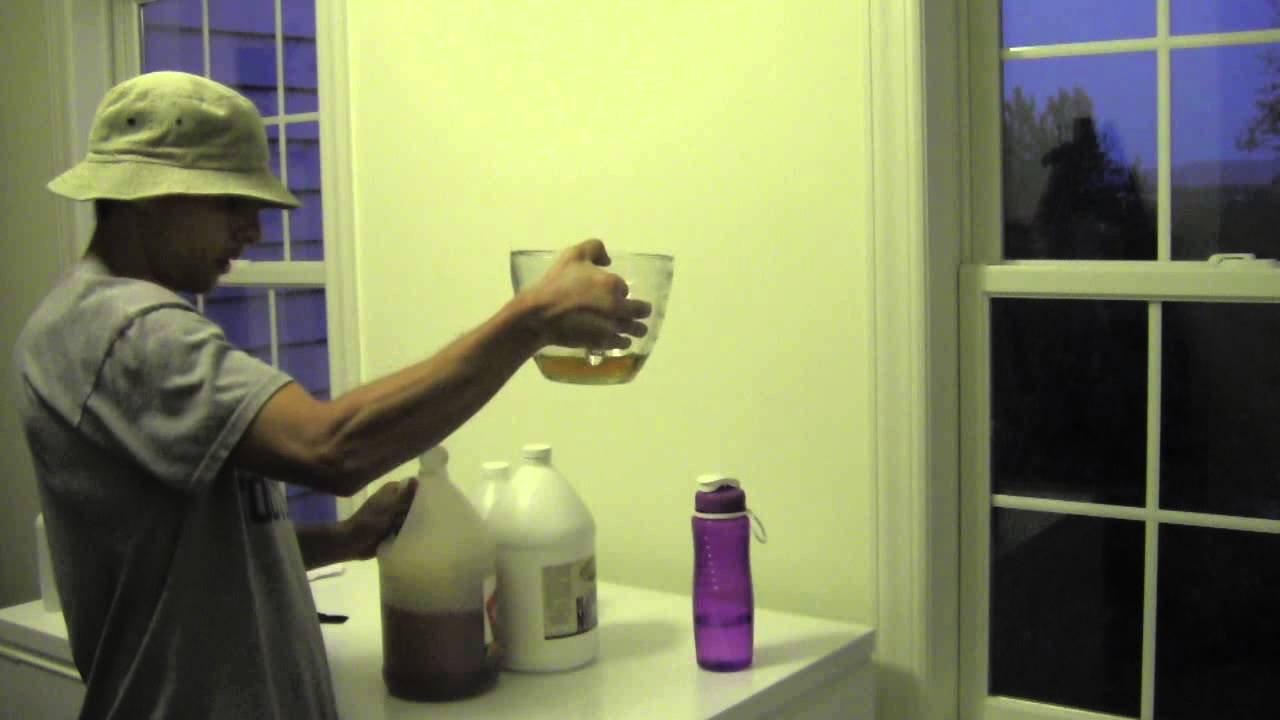Last year, a lot of my apple crop and some of my pear crop were infested with codling moth larvae. Given that I don’t spray my trees, I needed to come up with an alternative for control, unless I wanted to grow apples for the moths. This season, I’ve sprayed kaolin clay, which is a tiny clay particle that you spray on to the leaves and the fruit. This acts as an irritant to the pests, causing them to move on. This has worked well so far, as we’ve already had our best cherry harvest yet, and the apples and pears still look pretty clean. The other protection I’ve given my trees is a codling moth trap and lure. These are all homemade and inexpensive.
Molasses Traps Hung in Apple Trees
The purpose of hanging a codling moth trap and lure in your trees is to attract the moths away from your fruit and into the lure, where they drown in the liquid. This coupled with the kaolin clay has worked well to break the codling moth cycle. As I was researching this project, I wasn’t certain what would be the best type of lure and the best type of trap to use. Of course the internet is full of diverging opinions. So, I decided to try slightly different traps and lure recipes to find what worked best for me.
The Traps
Some people said it was important to have only one hole in the container, and others said it was good to put two holes so the lure can waft through the orchard. Some people swore that painting red around the hole would attract more moths, and others didn’t mention it. So I made traps with and without red, and traps with one hole and with two.
Traps used, drilled and wire strung through
The Lure
I found two recipes to try. One was a simple recipe of 50% water and 50% molasses. The other was 1 cup of apple cider vinegar, ½ cup molasses, 1/8 teaspoon of ammonia, and 4 ½ cups of water. Half of the traps I put out had one or the other recipe. I marked them, so I wouldn’t mix them up.
Apple Cider Vinegar and Molasses Trap
How to Make the Traps
- Collect plastic containers. Over the winter I saved milk jugs and apple sauce containers.
- Wash out the containers.
- Cut holes on both sides of the container, to allow the lure to waft through the orchard. Or one side if you prefer, but that won’t waft the attractant as much.
- Paint red around the hole or not. It didn’t make a difference for me.
- Drill two holes in the neck of the container.
- String wire through, and fashion it into a hook. I used sturdy trellis wire that I had left over from my kiwi trellis project.
Holes drilled at neck
How to Make the Lure
The 50% molasses and 50% water trap was easy. I added the molasses into a big container and then added the water. Then I mixed. I poured the lure into my containers outside, because I did not want to spill sticky molasses. Your kitchen sink would be okay also.
The alternate recipe was: 1 cup apple cider vinegar, ½ cup molasses, 1/8 teaspoon ammonia (This amount is tiny, very hard to do exactly), 4 ½ cups of water.
Codling Moth Traps
Conclusion
After a week and a half, I brought the traps in and checked them to see which ones worked well and which ones didn’t. First, they all worked to some varying degree. The containers with red around the openings did NOT catch anymore moths than the ones that did not have red. The containers with two holes did catch slightly more moths than the ones with one hole. The apple cider vinegar and molasses lure did catch more that the straight molasses and water recipe.
Moth in Molasses Solution
So, in my opinion, use the apple cider vinegar and molasses recipe for a lure, and cut holes in both sides of your container. If you feel like painting the openings red, that’s fine, it won’t hurt, but I don’t think it makes a big difference.
Moths in Apple Cider Vinegar and Molasses Solution
~ Phil Williams
Phil Williams is a permaculture consultant and designer and creator of the website foodproduction101.com. He is also the author of numerous books, most recently, Fire the Landscaper and Farmer Phil's Permaculture. His website provides useful, timely information for the experienced or beginning gardener, landscaper, or permaculturalist. Phil's personal goals are to build soil, restore and regenerate degraded landscapes, grow and raise an abundance of healthy food of great variety, design and install resilient permaculture gardens in the most efficient manner possible, and teach others along the way.
This is a companion discussion topic for the original entry at https://peakprosperity.com/how-to-make-a-codling-moth-trap-and-lure/
